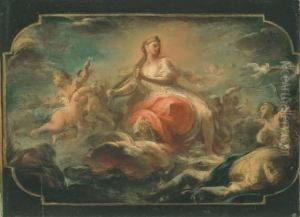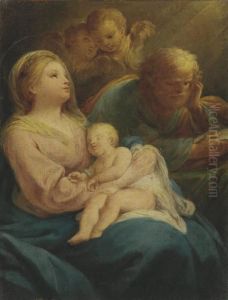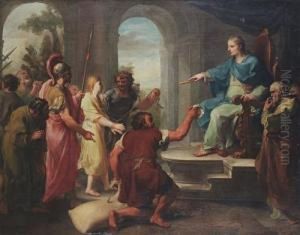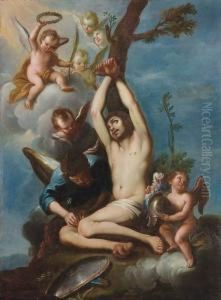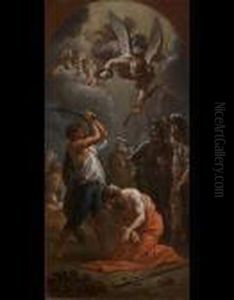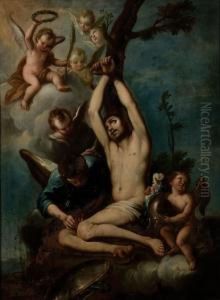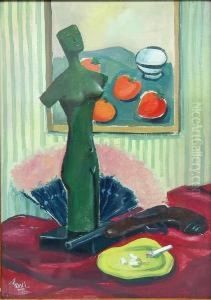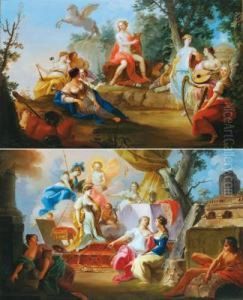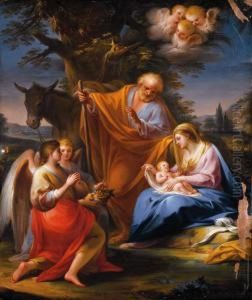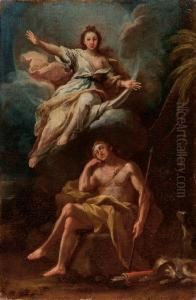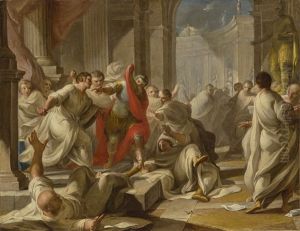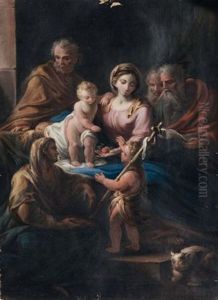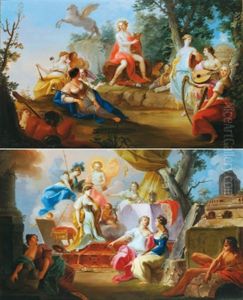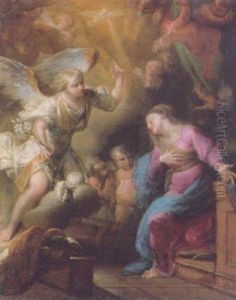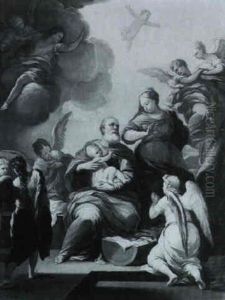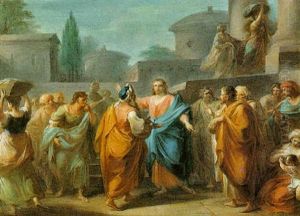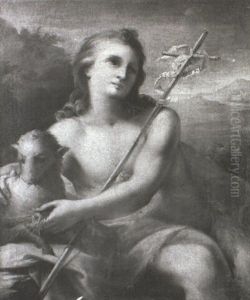Mariano Rossi Paintings
Mariano Rossi was an Italian painter, primarily known for his frescoes in the late Baroque and early Neoclassical style. Born in 1731 in Scalvaia, Siena, he was active during the late 18th century, a period that saw a transitional phase in art from the Baroque to Neoclassicism.
Rossi's initial training started in Siena, where he was influenced by the works of Baroque artists. However, he soon moved to Rome, which was a hub for artists seeking to refine their skills and find commissions. In Rome, Rossi's style evolved as he was exposed to the works of classical antiquity as well as to the emerging Neoclassical style, which was gaining popularity through the works of artists like Anton Raphael Mengs and Winckelmann's theories on art.
Mariano Rossi is especially remembered for his decorative fresco work in various palaces and churches in Rome. His works are characterized by a light palette, gracefulness, and clarity of form, reflecting the shift in tastes during his lifetime. Among his notable works are the frescoes in the Palazzo Altieri and the Palazzo Chigi in Ariccia.
Despite the high quality of his frescoes, Rossi did not gain the same level of fame as some of his contemporaries. Nevertheless, his contributions to the art of fresco painting during the late Baroque and early Neoclassical period remain significant. He was able to seamlessly blend the two styles, integrating the dynamism and drama of Baroque with the serenity and simplicity of Neoclassicism.
Mariano Rossi died in 1807, leaving behind a legacy of work that continues to be studied and appreciated for its artistic merit and historical significance within the context of European art history. His frescoes still adorn the walls of many Italian buildings, serving as a testament to his skill and the artistic transitions of his time.
